Research shows that exercise can have a positive impact on overall fertility as well as improve the outcome of assisted reproductive technology (ART). On the other hand, high-intensity workouts can have the opposite effect in both men and women. In this article, we explore the connection between physical activity and reproductive health.
The role of physical exercise on fertility in women
Regular exercise and physical activity are an important part of a healthy lifestyle and can reduce the risk of cardiovascular disease, diabetes and cancer. But when taken to an extreme, they are associated with health problems, including fertility issues in both women and men. Indeed, frequent, high-intensity physical activity increases subfertility and ovulatory infertility and can delay pregnancy. Exercising for at least 30 minutes a day can decrease the risk of ovulatory-factor infertility whereas “over-exercising” for more than 60 minutes a day can actually have detrimental effects on fertility.
Women who engage in regular high-intensity exercise may experience menstrual disturbances. This is because the endocrine system responds to the adapts to negative energy balance exercise-dependent with functional/hypothalamic amenorrhea (i.e., missing periods due to an alteration of hypothalamic hormonal equilibrium). In contrast, moderate exercise not only improves fertility, but also helps prepare the body for pregnancy. Walking is one of the best ways to stay active when trying to conceive. Low impact exercise reduces the risk of adverse events and injuries while increasing the heart rate.
Impact of physical exercise on fertility in men
In males, prolonged intensive exercise (and training) may lead to adverse physiological effects, particularly on the reproductive system and fertility. The effects on the male reproductive system depend on the duration, intensity and type of activity as well as individual characteristics (e.g., fitness level, adaptive capacity, etc).
Research has shown impairment of seminal parameters and sex hormone levels in male athletes. In addition, a reduction in total and free testosterone, changes in LH release and in pituitary responses to GnRH and other pharmacological disturbances have been observed in men who engage in high-intensity sports. However, the exact mechanisms responsible for changes in reproductive function are still unknown.
Physical exercise and weight management
Weight management is also critical in preventing and treating infertility and both physical activity (any movement by the body over the day) and exercise (planned or structured physical activity) play a key role in this process. Current guidelines call for 35 to 45 minutes of moderate exercise daily for losing weight.
For overweight and obese men and women, participating in sports can enhance weight loss and provide overall health benefits while moderate exercise can improve fertility. Diet also plays an important role in achieving and maintaining proper weight.
Couples trying to conceive should work on their lifestyle by: planning an adequate exercise program with the support of a personal trainer, seeing the doctor for a health check-up, and following a healthy diet. Limiting stress is also important as it adversely affects fertility.
References
- Lisa Moran on behalf of PCHSIG. The role of exercise and physical activity in improving fertility, quality of life and emotional well-being. Pre-Conception Health Special Interest Group.
- Organization WH. Global prevalence of infertility, infecundity and childlessness. Accessed 1 Sept 2022.
- Palomba S, Falbo A, Valli B, et al. Physical activity before IVF and ICSI cycles in infertile obese women: an observational cohort study. Reprod Biomed Online. 2014; 29:72-9.
- Rao M, Zeng Z, Tang L. Maternal physical activity before IVF/ICSI cycles improves clinical pregnancy rate and live birth rate: a systematic review and meta-analysis. Reprod Biol Endocrinol. 2018;16(1):11.
- Warren MP, Perlroth NE. The effects of intense exercise on the female reproductive system. J Endocrinol. 2001;170(1):3-11.
- Vaamonde D, Garcia-Manso JM, Hackney AC. Impact of physical activity and exercise on male reproductive potential: a new assessment questionnaire. Rev Andal Med Deport. 2017;10(2):79-93.
- Arce JC, De Souza MJ. Exercise and male factor infertility. Sports Med. 1993 Mar;15(3):146-69.
- Montano L, Ceretti E, Donato F, Bergamo P, et al; FASt study group. Effects of a Lifestyle Change Intervention on Semen Quality in Healthy Young Men Living in Highly Polluted Areas in Italy: The FASt Randomized Controlled Trial. Eur Urol Focus. 2022;8(1):351-9.
- Foucaut AM, Faure C, Julia C, Czernichow S, Levy R, Dupont C; ALIFERT collaborative group. Sedentary behavior, physical inactivity and body composition in relation to idiopathic infertility among men and women. PLoS One. 2019;14(4):e0210770.



